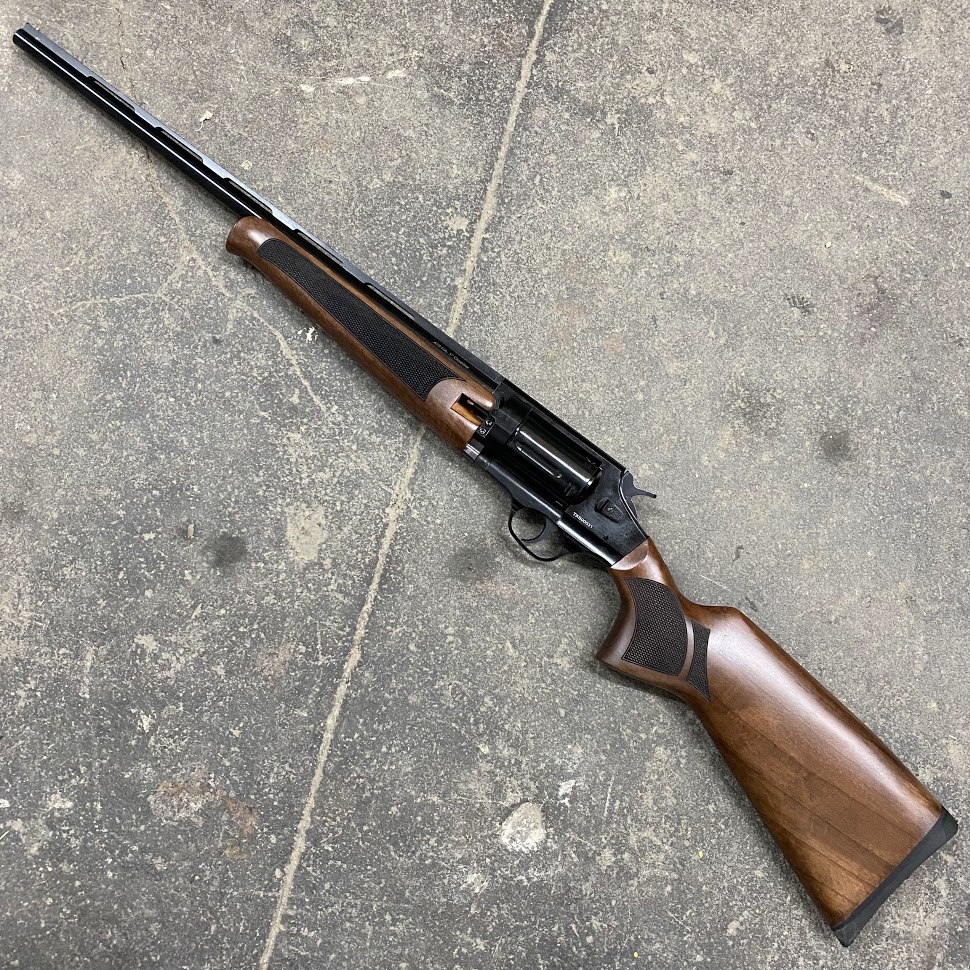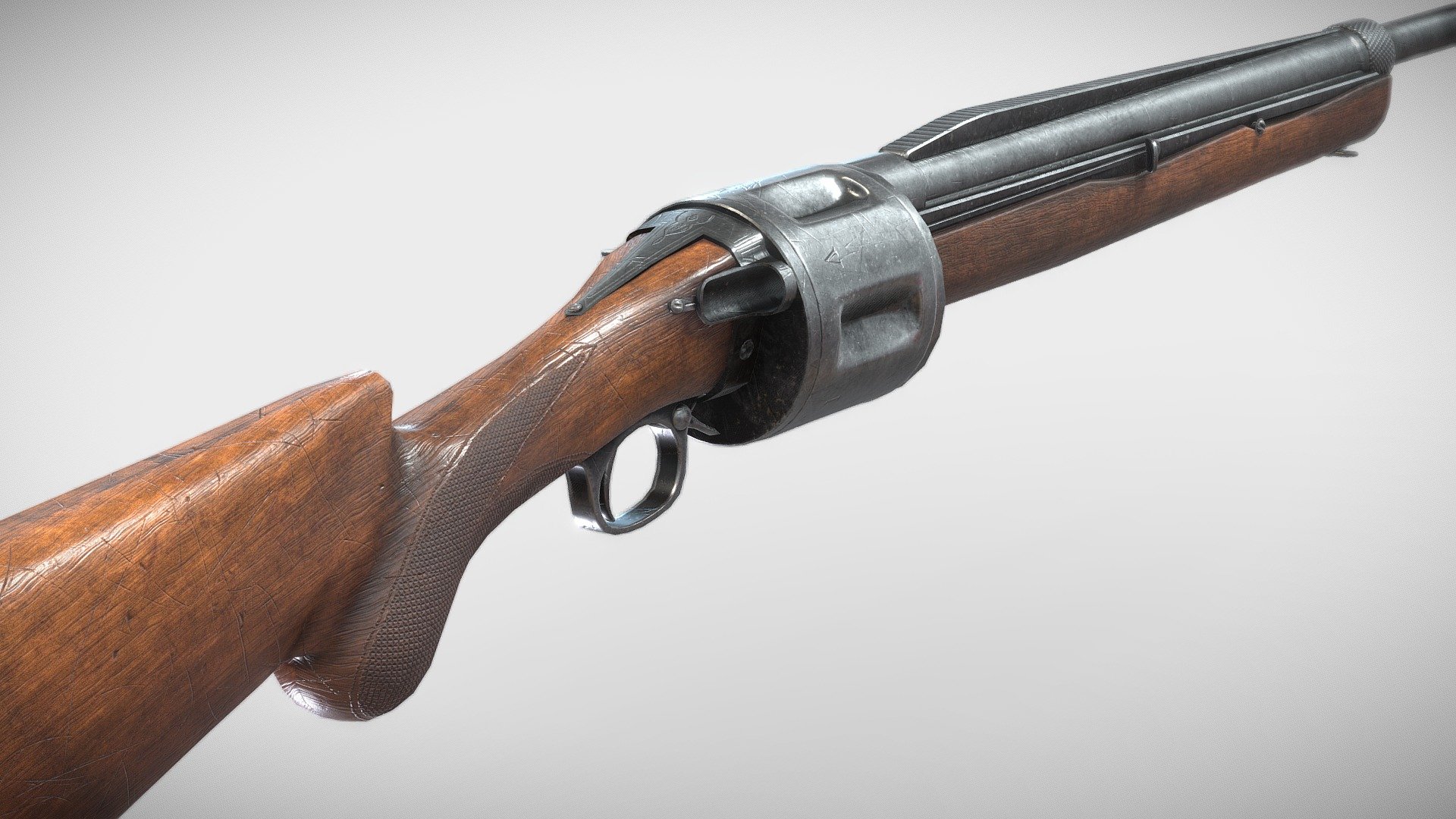The 410 revolving cylinder shotgun, a fascinating and often overlooked firearm, boasts a rich history and unique design. This article delves into its evolution, mechanical intricacies, ammunition characteristics, legal considerations, practical applications, and safety protocols. From its historical context to its contemporary relevance, we explore all facets of this intriguing weapon.
This exploration covers the 410 revolving cylinder shotgun’s historical development, tracing its lineage and comparing it to contemporary designs. We’ll examine its mechanical operation in detail, including its firing process and safety features. Ballistics, legal regulations across various jurisdictions, and practical uses in hunting, self-defense, and sport shooting will also be thoroughly investigated. Finally, crucial safety guidelines and societal perceptions will be addressed to provide a complete picture of this unique firearm.
The 410 Revolving Cylinder Shotgun: A Comprehensive Overview
The .410 bore revolving cylinder shotgun, while less common than its pump-action or break-action counterparts, holds a unique place in firearms history. This article explores its evolution, mechanics, ammunition, legal considerations, practical applications, safety protocols, and cultural impact.
Historical Context of the 410 Revolving Cylinder Shotgun
The development of the .410 gauge shotgun itself stems from a desire for a smaller, lighter shotgun, particularly for smaller game hunting. Revolving cylinder firearms, meanwhile, emerged as a way to increase the rate of fire compared to single-shot or muzzle-loading designs. The combination of these two concepts resulted in the .410 revolving cylinder shotgun, a relatively niche firearm with a fascinating history.
While not as prolific as other shotgun designs, several manufacturers produced these weapons, often catering to specific market segments.
The historical significance of revolving cylinder shotguns lies in their contribution to the evolution of firearm technology. They represented an attempt to improve the speed and efficiency of shotguns, particularly in situations requiring rapid fire. Compared to contemporary designs, such as single-shot or early break-action shotguns, the revolving cylinder offered a clear advantage in terms of the potential rate of fire.
However, issues with reliability and overall power limited their widespread adoption. Key manufacturers and models varied over time and location, with many remaining undocumented or obscure.
Mechanical Operation and Design of the 410 Revolving Cylinder Shotgun

Source: gunbros.com
The .410 revolving cylinder shotgun operates on a relatively simple principle: a cylinder containing multiple chambers rotates, allowing for successive shots without reloading each chamber individually. The firing process begins with cocking the hammer, rotating the cylinder to align a loaded chamber with the barrel, and pulling the trigger. The firing pin strikes the primer, igniting the propellant and propelling the shot.
The following table illustrates the internal components:
| Component | Function | Component | Function |
|---|---|---|---|
| Cylinder | Houses the individual .410 gauge shells. | Hammer | Strikes the firing pin. |
| Barrel | The tube through which the shot is fired. | Firing Pin | Ignites the primer of the shell. |
| Trigger | Releases the hammer. | Revolving Mechanism | Allows rotation of the cylinder. |
| Frame | Provides structural support. | Ejector | Removes spent shells. |
Safety mechanisms typically include a hammer block or a half-cock position to prevent accidental discharge. Proper handling and regular maintenance are crucial to ensure safe operation.
Ammunition and Ballistics of the 410 Revolving Cylinder Shotgun
The .410 revolving cylinder shotgun typically uses standard .410 gauge shotshells. These shells come in various shot sizes and loads, impacting range and accuracy. Larger shot sizes offer greater stopping power at close range, while smaller shot sizes are better suited for longer ranges. The type of shot (e.g., lead, steel, or bismuth) also affects ballistics. The length of the barrel significantly impacts the effective range of the weapon.
Factors influencing range and accuracy include barrel length, choke constriction (if present), ammunition type, and shooter skill. Different ammunition types produce varying patterns and velocities, affecting target impact. For example, buckshot will have a tighter pattern and greater stopping power at close range than birdshot, but birdshot will have a flatter trajectory and greater range.
Legal and Regulatory Aspects of the 410 Revolving Cylinder Shotgun

Source: sketchfab.com
The legal status of .410 revolving cylinder shotguns varies significantly across jurisdictions. Some regions may have stricter regulations than others, including licensing requirements, background checks, and restrictions on carrying concealed. It is crucial to be aware of and comply with all local, state, and federal laws regarding firearm ownership and use.
| Jurisdiction | Licensing | Restrictions | Carrying Laws |
|---|---|---|---|
| United States (varies by state) | Often requires licensing, background checks. | May restrict certain types of ammunition. | Open carry laws vary widely; concealed carry typically requires a permit. |
| Canada | Requires licensing and registration. | Stricter regulations than the US, with restrictions on certain firearm types. | Stricter concealed carry regulations than the US. |
| United Kingdom | Very strict licensing and registration requirements. | Ownership of many types of firearms is heavily restricted or prohibited. | Concealed carry is generally prohibited. |
This table provides a simplified overview; specific regulations can be complex and vary significantly within each jurisdiction. It is essential to consult local authorities for the most up-to-date and accurate information.
Practical Applications and Use Cases of the 410 Revolving Cylinder Shotgun
Historically, the .410 revolving cylinder shotgun has seen limited use. Its relatively low power and capacity compared to other shotguns restricted its applications. However, it might find use in situations requiring a compact and easily concealable firearm, such as personal protection in a limited space, or as a backup weapon. It is not suitable for hunting larger game, or for long-range shooting.
Compared to other firearms, its effectiveness is limited. A modern handgun might offer similar stopping power at close range with greater capacity. However, the shotgun’s potential for a wider spread of shot at close range could be advantageous in certain defensive situations. Examples include situations where multiple shots might be necessary quickly at extremely close range, although this is situational and depends on the specific circumstances.
Safety Considerations and Handling Procedures
Safe handling of any firearm, including the .410 revolving cylinder shotgun, is paramount. Always treat the weapon as if it were loaded, regardless of whether it is or not. Proper storage involves keeping the firearm unloaded, locked, and in a secure location, inaccessible to unauthorized individuals. Regular cleaning and maintenance are essential to ensure reliable operation and prevent malfunctions.
- Always visually and physically inspect the firearm before handling.
- Point the muzzle in a safe direction at all times.
- Keep your finger off the trigger until ready to fire.
- Load and unload the firearm slowly and deliberately.
- Never point the firearm at anything you do not intend to shoot.
- Clean the firearm regularly after use.
- Store the firearm unloaded and securely.
Before each use, conduct a thorough safety check, confirming the firearm is unloaded, the cylinder is properly closed, and the safety mechanism is engaged. After use, repeat the unloading procedure, ensuring the firearm is clean and stored safely.
The 410 revolving cylinder shotgun, a less common firearm, presents unique challenges for those seeking self-sufficiency. Reliable power is crucial for off-grid living, and finding the right power source is paramount; this is where choosing the best solar generator for off grid living 2023 becomes essential. This ensures consistent power for crucial tasks, including maintaining communication and security systems, important considerations alongside firearm ownership in remote areas.
Cultural and Societal Perceptions of the 410 Revolving Cylinder Shotgun
The .410 revolving cylinder shotgun has a relatively low profile in popular culture compared to other firearms. Its depiction in literature, film, and other media is often limited and usually portrayed as a less powerful or less effective weapon compared to other shotguns or handguns. This reflects its actual capabilities and limited use. Societal perceptions often center around its compact size and potential for concealed carry, sometimes leading to myths or misconceptions about its effectiveness or lethality.
End of Discussion: 410 Revolving Cylinder Shotgun
The 410 revolving cylinder shotgun, while perhaps less common than other firearm types, holds a significant place in firearms history and continues to spark interest among collectors and enthusiasts. Understanding its mechanics, legal standing, and safe handling practices is crucial for responsible ownership and use. This overview aims to provide a comprehensive resource for anyone seeking a deeper understanding of this distinctive weapon.
